

Damion Smy
Boxy new KGM Musso unveiled to take on HiLux and Ranger ahead of Australian launch
7 Hours Ago
We drag race BMW's fastest production car, the M8 Competition, against its fastest road bike, the S1000RR. The result may surprise you!

Founder
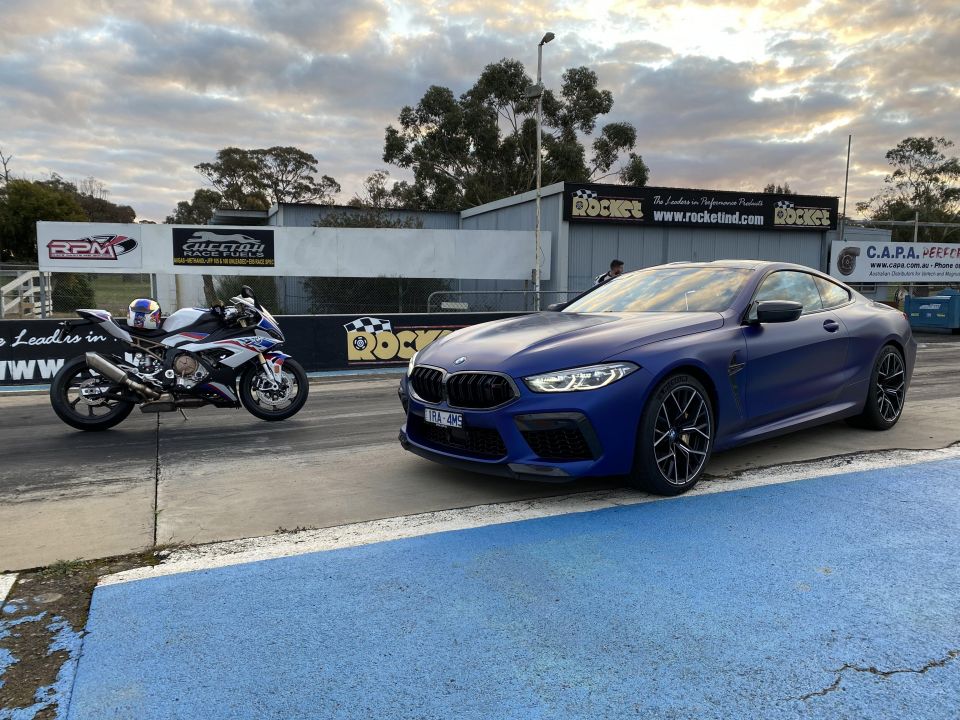

Founder
What do the BMW M8 Competition and BMW S 1000 RR have in common? They’re both at a drag strip, and we want to see how much quicker the bike is, of course!
The new BMW M8 Competition (you can read our full review of the BMW M8 Competition and watch our detailed video review here) signals a return for BMW to its grand touring roots. It’s the most powerful series production car the brand has ever built, making use of an all-wheel drive system to contain the huge amount of torque it has at the ready.
Over on two wheels, the S 1000 RR is the go-fast BMW of the bike world. It’s also the first bike to integrate BMW M insignia and branding on two wheels instead of four.
Moons aligned and we had the chance to have both run down a drag strip at the same time. We assumed the BMW S 1000 RR would absolutely annihilate the M8 Competition, with a claimed 0-100km/h time of around 2.6 seconds and 1/4 mile time of just over 10 seconds.
The M8 Competition offers a commendable 0-100km/h time of 3.2 seconds and a quarter mile time of just over 11 seconds. But, the drag strip is cold, unprepared, and was damp just a few hours earlier. That means this should be a close battle.
The only way to figure out how big of a difference there is between these two is by doing a CarExpert Dragparison!
For clarity, in all our tests both cars were warmed up so the engines and components were at operating temperature.
The drag strip we used was unprepared and slightly damp, which means there’s extra wheel slip off the line that could effect performance figures. Finally, we don’t deduct the one-foot rollout – the numbers are recorded from the moment the car starts moving.
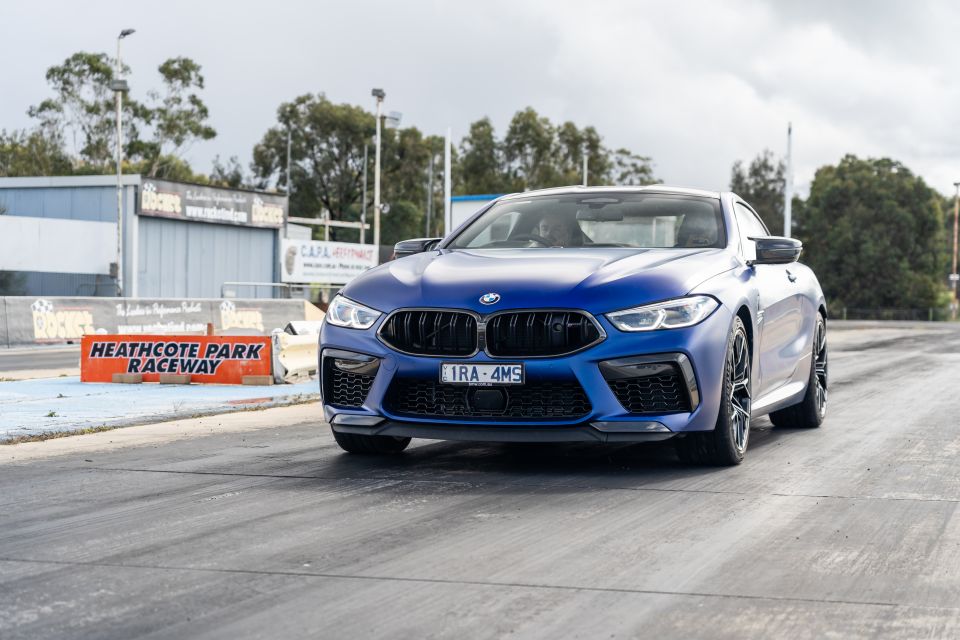

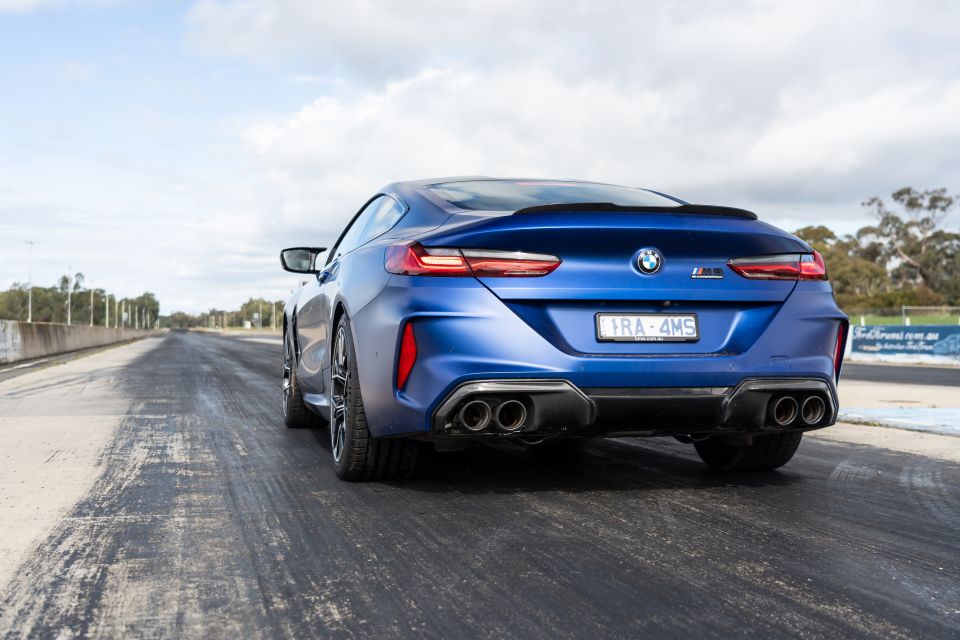

The engine is a work of art. The engine is topped by a (real) carbon fibre cover, but once you remove it you’ll expose the twin-turbocharged V8 engine that lurks beneath.
The 4.4-litre twin-turbocharged V8 engine produces 460kW of power and 750Nm of torque, mated to an eight-speed automatic transmission. It’s a torque converter, with BMW opting to avoid dual-clutch gearbox technology.
With an asking price of $352,900 plus on-road costs, it’s over $300,000 more expensive than the motorbike.
BMW’s S 1000 RR is powered by a 999cc four-cylinder naturally aspirated engine making 152kW of power and 113Nm of torque. It produces 785kW of power per tonne (weighing in at 193.3kg with the optional M carbon package), has a top speed of 303km/h, and redlines at 14,600rpm, sending torque through one wheel.
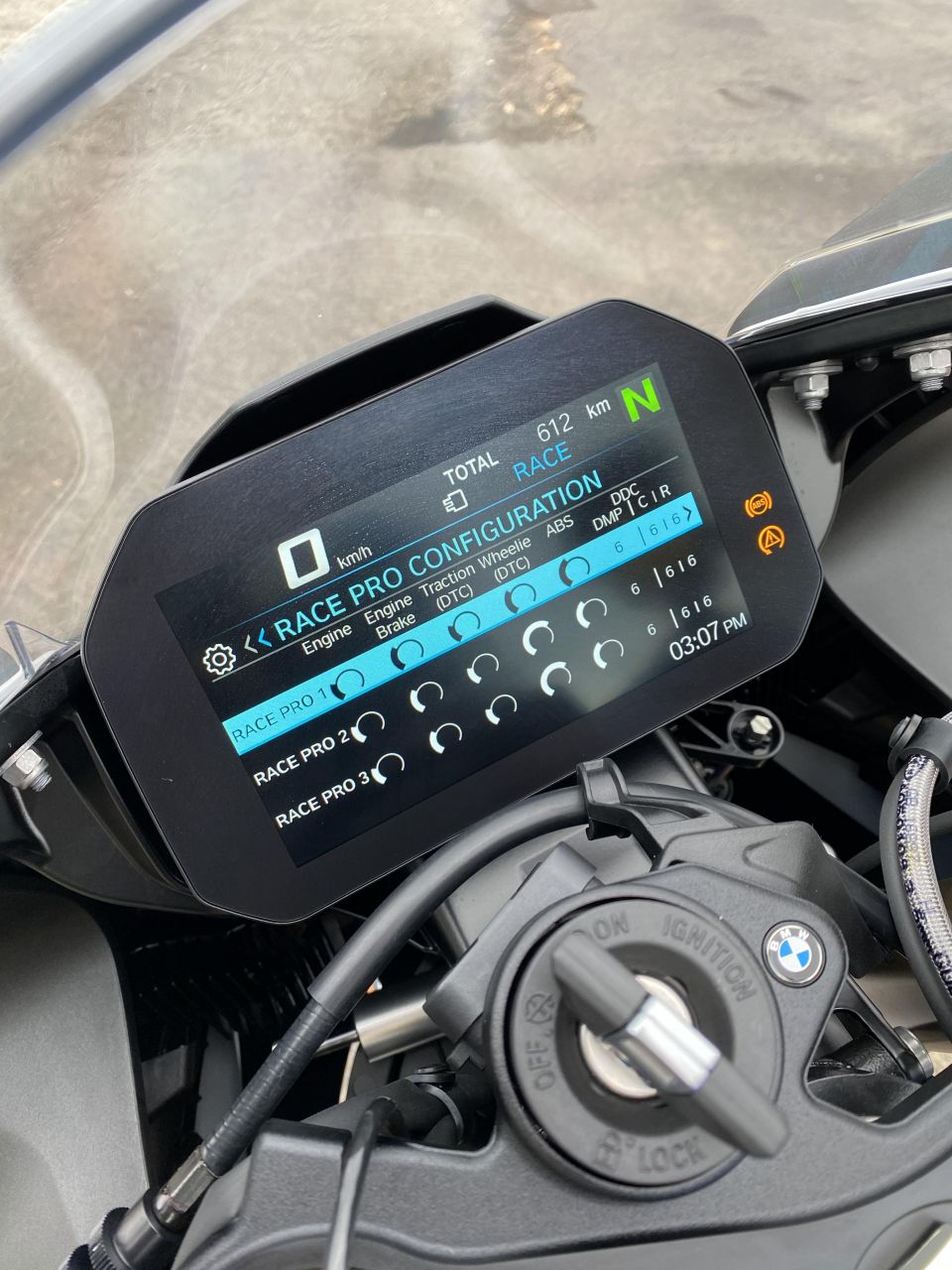
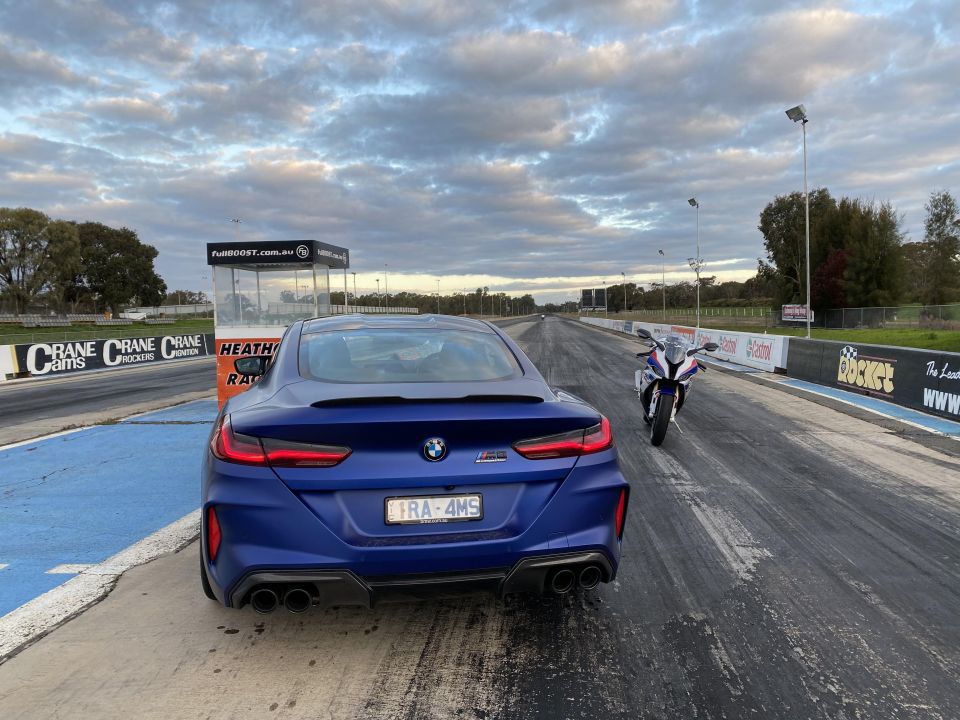
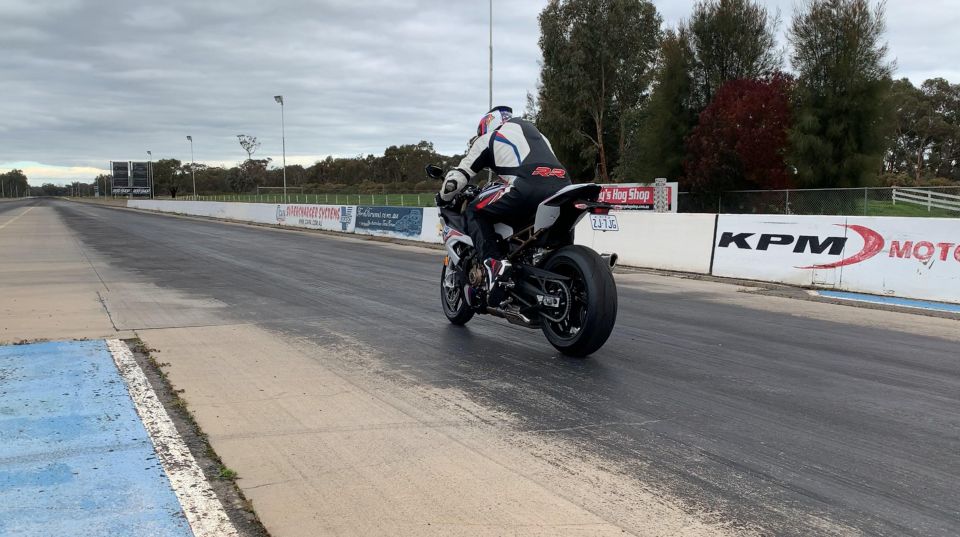
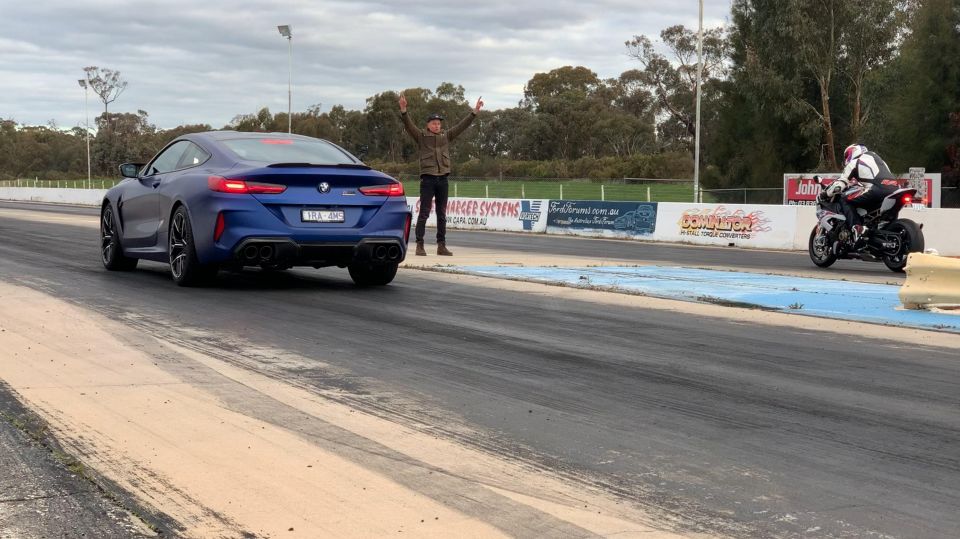
| Test | BMW M8 Competition | BMW S 1000 RR |
|---|---|---|
| 0-100km/h (62mph) | 3.3 seconds | 3.9 seconds |
| 1/4 mile | 11.2 seconds at 202.5km/h | 11.2 seconds at 224.5km/h |
| 100km/h (62mph) – 0 | 3.0 seconds at 37.2 metres | 3.7 seconds at 43.5 metres |
MORE: Watch more CarExpert Dragparisons MORE: BMW M8 Competition detailed review
Share your thoughts with us in the comments below!
Paul Maric is a CarExpert co-founder and YouTube host, combining engineering expertise with two decades in automotive journalism.
Share your thoughts and write a review of a car you own and get featured on CarExpert.


Damion Smy
7 Hours Ago


Damion Smy
9 Hours Ago


Damion Smy
10 Hours Ago


Damion Smy
12 Hours Ago


Damion Smy
13 Hours Ago


Damion Smy
15 Hours Ago